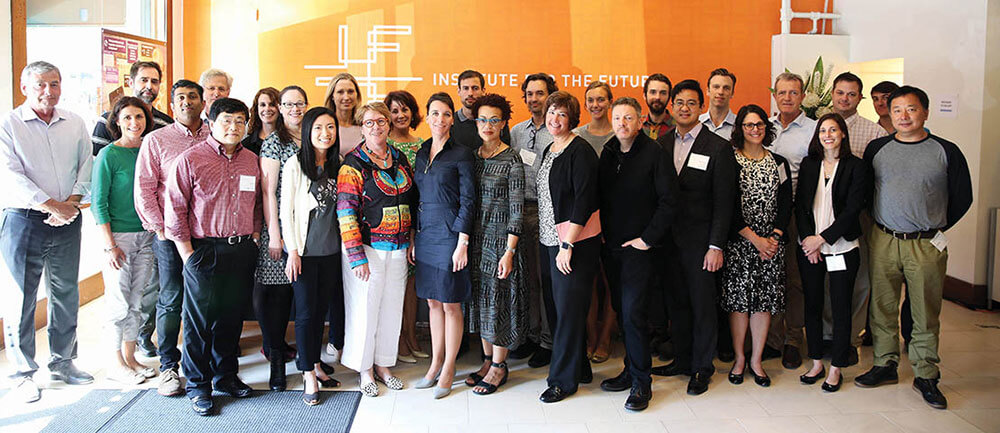
Next Gen Recent IFTF Foresight Practitioner Workshop participants learned the tools and methodologies to help them prepare for the future.
“This is a zone of the philanthropic sector that’s just emerging,” said Hatch, a research director for the Silicon Valley–based Institute for the Future (IFTF). “There is a shift in the identity of givers — from givers to backers.”
IFTF works with organizations in the United States and abroad — a mixture of corporate, nonprofit, and government groups — and develops 10-year forecasts on the social sciences, public policy, technology, and the arts. The institute produces everything from reports to podcasts, and hosts three-day workshops near its Palo Alto, California, headquarters that focus not just on philanthropy but on subjects such as work, food, cities, and governance. This month, IFTF will present a workshop on philanthropic trends at the Council on Foundations 2017 Annual Conference in Dallas.
“The purpose [of the workshops] is to have an immersive, interactive experience with trained facilitators,” Hatch said. “We want to provoke people to consider alternative future scenarios in hopes of making better decisions.” The format allows attendees — who in Dallas will represent groups such as community foundations and large-scale international organizations — to engage in stimulating discussions, and for facilitators to share case studies. “We see our role as providing the foresight,” Hatch said. “We think the world would be a better place if more people were systematically thinking about the future.”
THE SECOND CURVE
Like many sectors in America, philanthropy is in a state of turbulence. But don’t worry — it’s positive turbulence, according to IFTF, as individuals and small networks play a larger role in giving. Here’s the idea: For 250 years, resources flowed through institutions such as banks, corporations, foundations, and universities. IFTF calls this period the First Curve. We are now entering the Second Curve, in which people in small groups use technology and personal connections — often with little money and limited management — to support initiatives that only large organizations could have managed in the past. Examples include crowdfunding projects on sites such as Kickstarter, GoFundMe, and Ioby, which helps communities plan and fund projects in their neighborhoods. Or projects such as GoodGym, a U.K. organization through which runners perform community tasks while exercising. In Michigan, the Detroit Bus Company is a biodiesel-bus system with a unique model: For every ticket sold, the company donates a free ride to a child in need, helping kids go to school or to after-school programs.
“The way that we humans are organizing ourselves is starting to change,” Hatch said. “We’re seeing a shift from organizations to movements — a key shift that we forecast will impact the philanthropic sector.”
THE POWER OF PEOPLE
These new society- and community-improving movements are often unstructured, powered by social media, and focused on large, daring goals. This could include everything from the Arab Spring to Occupy Wall Street to the Women’s March on Washington. Smaller-scale trends include embedded giving: donating to charities through everyday activities, such as buying groceries and rounding up your bill. IFTF shares the example of walking past a community garden and receiving an alert on your smartphone telling you that the trees need treatment for a disease. Whether large or small, there’s a common thread: the use of technology and an emphasis on individuals.
“We’re shifting from funding projects to funding people,” said Hatch, who points to the rise of programs like the MacArthur Fellows and her own patronage on Patreon. It’s a movement away from hierarchical organizations and toward smaller, more agile social networks.
People power will continue to be a growing trend over the coming decade. To illustrate that point, Hatch tells a story about Mike Zuckerman, an IFTF fellow who’s focusing on new ways to restore vulnerable spaces, such as refugee settlements or struggling inner cities. In Greece, he converted an abandoned factory into a shelter for 160 refugees, and obtained their input throughout the process. IFTF’s executive director recently asked Zuckerman, “What would you do if you received a $1-million grant?” His response: “I would rather have a million people.”
